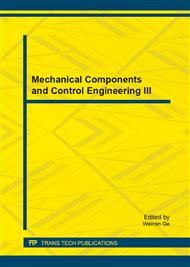p.1597
p.1601
p.1605
p.1611
p.1615
p.1621
p.1625
p.1629
p.1633
Dynamic Pricing Strategy and Optimal Resource Selection Strategy Based on Credibility Model
Abstract:
With the gradual development of Cloud Computing, the model of work and business will fundamentally change in the future. Current market trading mechanism under the cloud computing environment is lacking in flexibility and most of companies adopt a fixed-rate pricing model, which is difficult to meet the different needs of users. Based on cloud bank model, this paper introduces economic theory to provide a theoretical basis for the development of resource prices and propose a dynamic pricing strategy and maximize utility resource selection strategy based on market supply and demand and credit for cloud bank. In the last part of this paper, we use simulation platform to do a simple experiment to test this dynamic pricing strategy. Experiment result shows the pricing strategy could adjust computing resource prices automatically under the general market price rule conditions and maximize utility resource selection strategy could get the max utility for resource consumers.
Info:
Periodical:
Pages:
1615-1620
Citation:
Online since:
October 2014
Authors:
Keywords:
Price:
Сopyright:
© 2014 Trans Tech Publications Ltd. All Rights Reserved
Share:
Citation:


